-
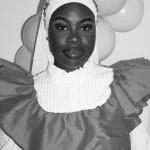
- Tibian Abdelwahab
Tibian
Abdelwahab
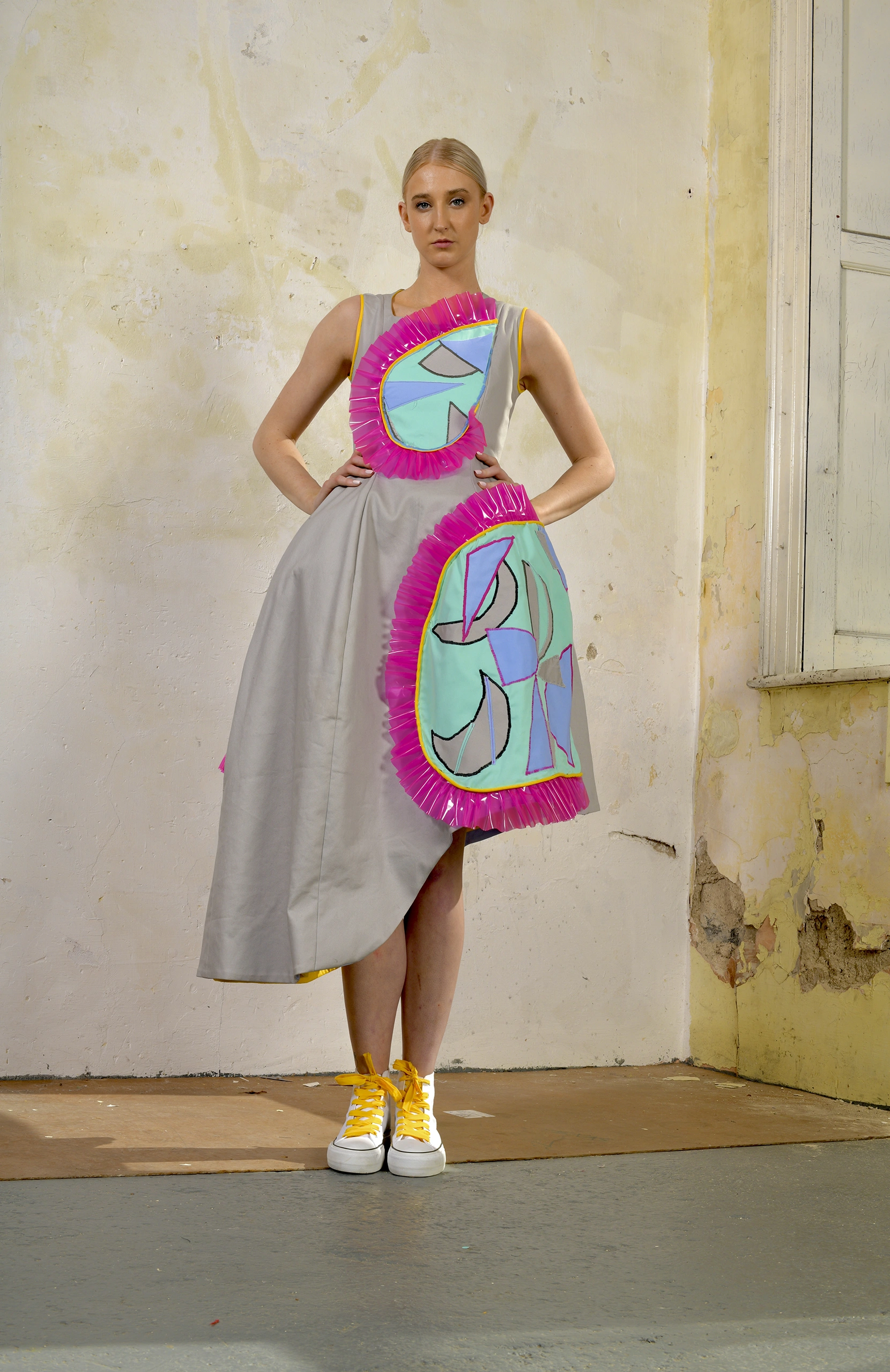
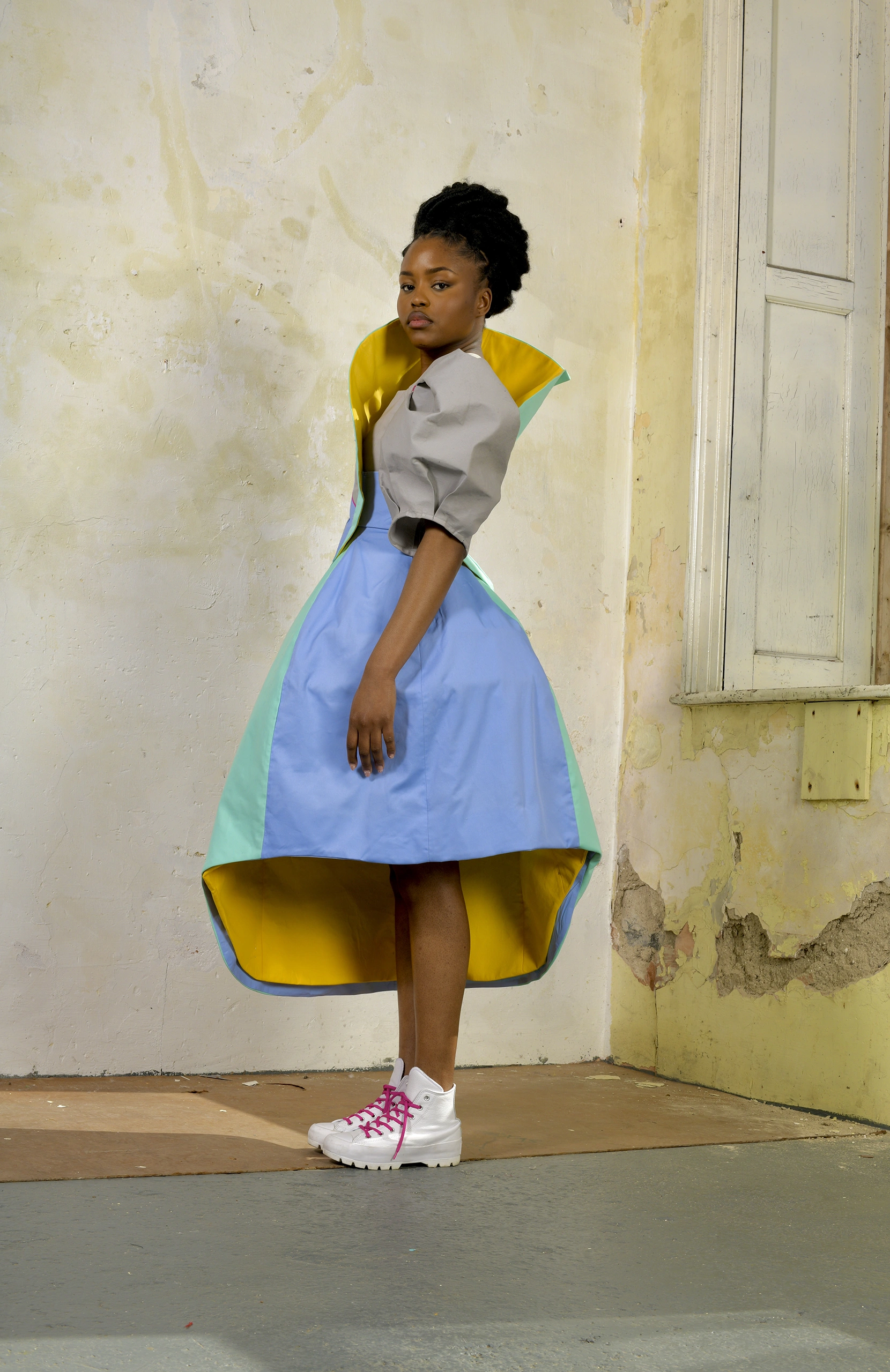
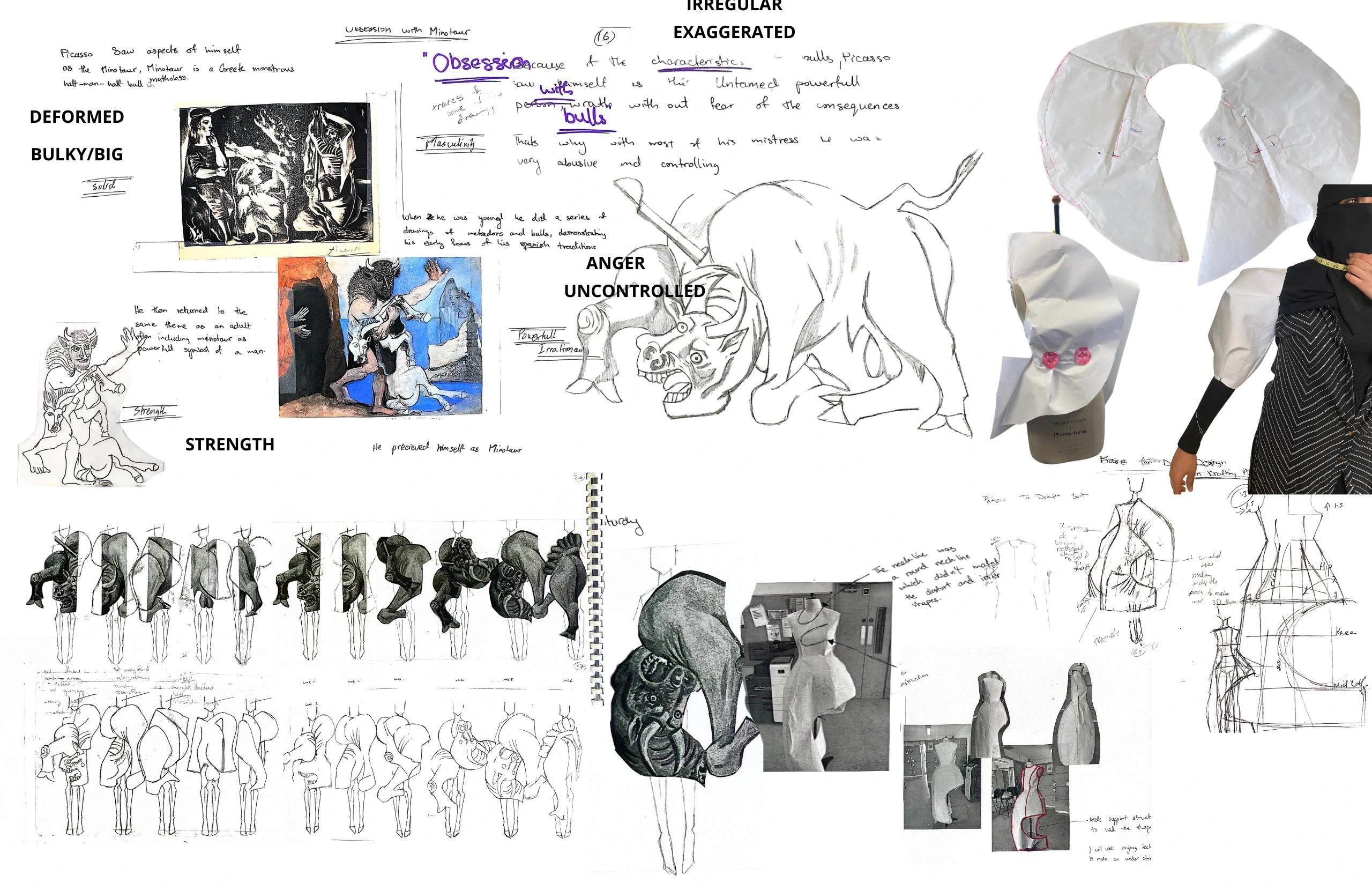
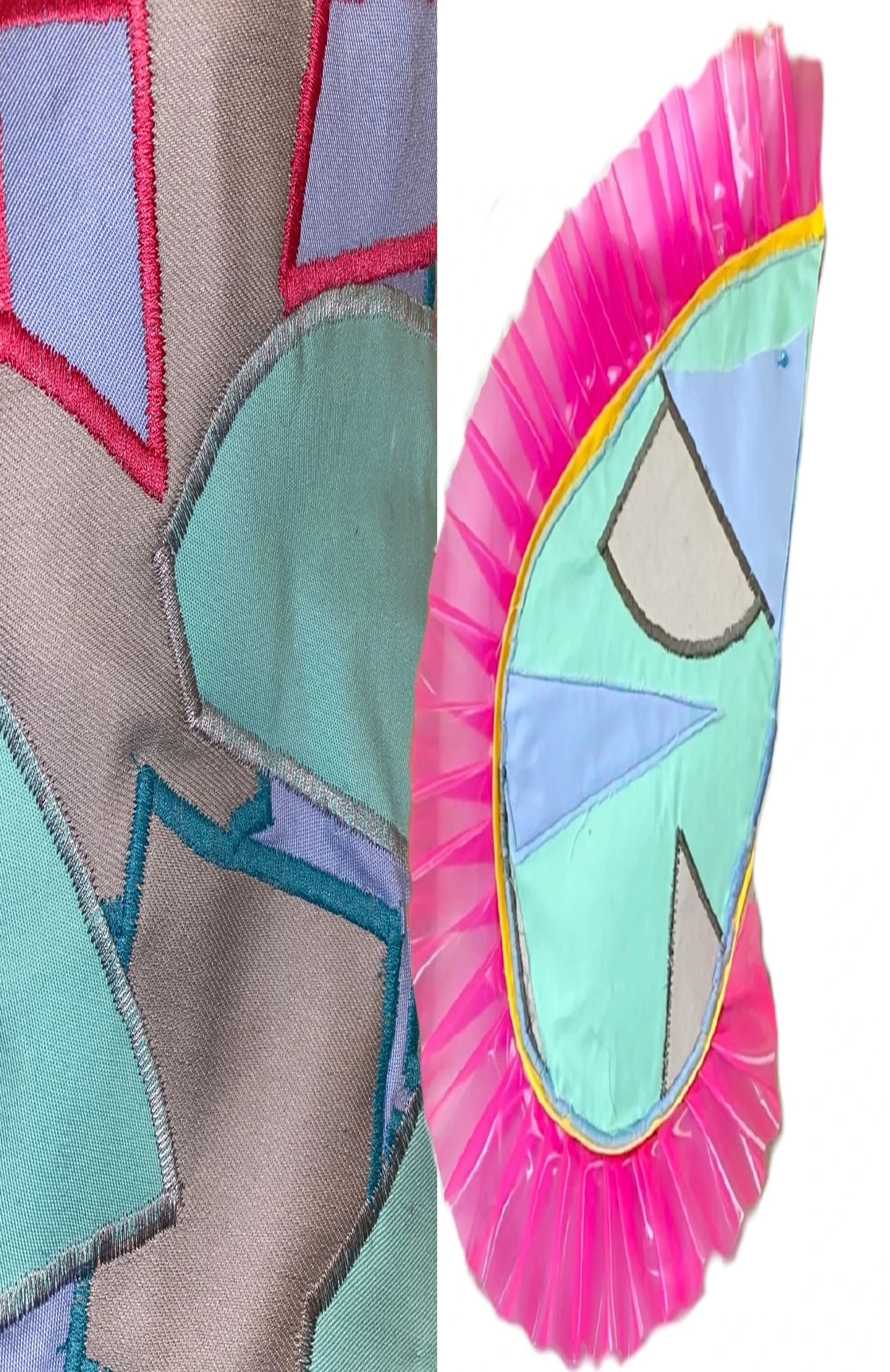
Abstraction through evoked emotions Picasso expressed through out his work. It conveys deep psychological states, with unevenness and distortion to break conventional ideas, unpredictability of emotions is mirrored in the imbalance of silhouettes that reflects the push and pull of human feelings. My collection is a bold exploration of abstract emotions, inspired by the expressive and unconventional works of Pablo Picasso. Through abnormal shapes, unevenness, and a playful obsession with distortion, each piece challenges traditional fashion norms, transforming garments into wearable art. Contrasting fabrics—structured and fluid, smooth and rough, sheer and opaque—enhance the tension within each piece. This interplay mirrors the complexities of human emotion, where chaos and harmony coexist.
Playfulness is another key characteristic woven throughout the collection. Just as Picasso infused his work with whimsy. I incorporate exaggerated details, bold color blocking, and unconventional accessories.
I initially started my design process using 2D collage again inspired by the distorted shapes and figures in his paints, I progressed onto the stand to help determine the proportion I wanted, letting myself work intuitively just his paintings were with freedom and energy not following any specific rules or methods.
Another defining feature of my work is the use of color and distortion, I wanted to portray the moods that a color can interpret. The selected color theme for my collection are bright pastels, using different colors on one garment in a color blocking technique.
This collection is a groundbreaking approach to form, color and composition. It’s the ability to deconstruct reality and reassemble it through the lens of abstraction and Cubism.
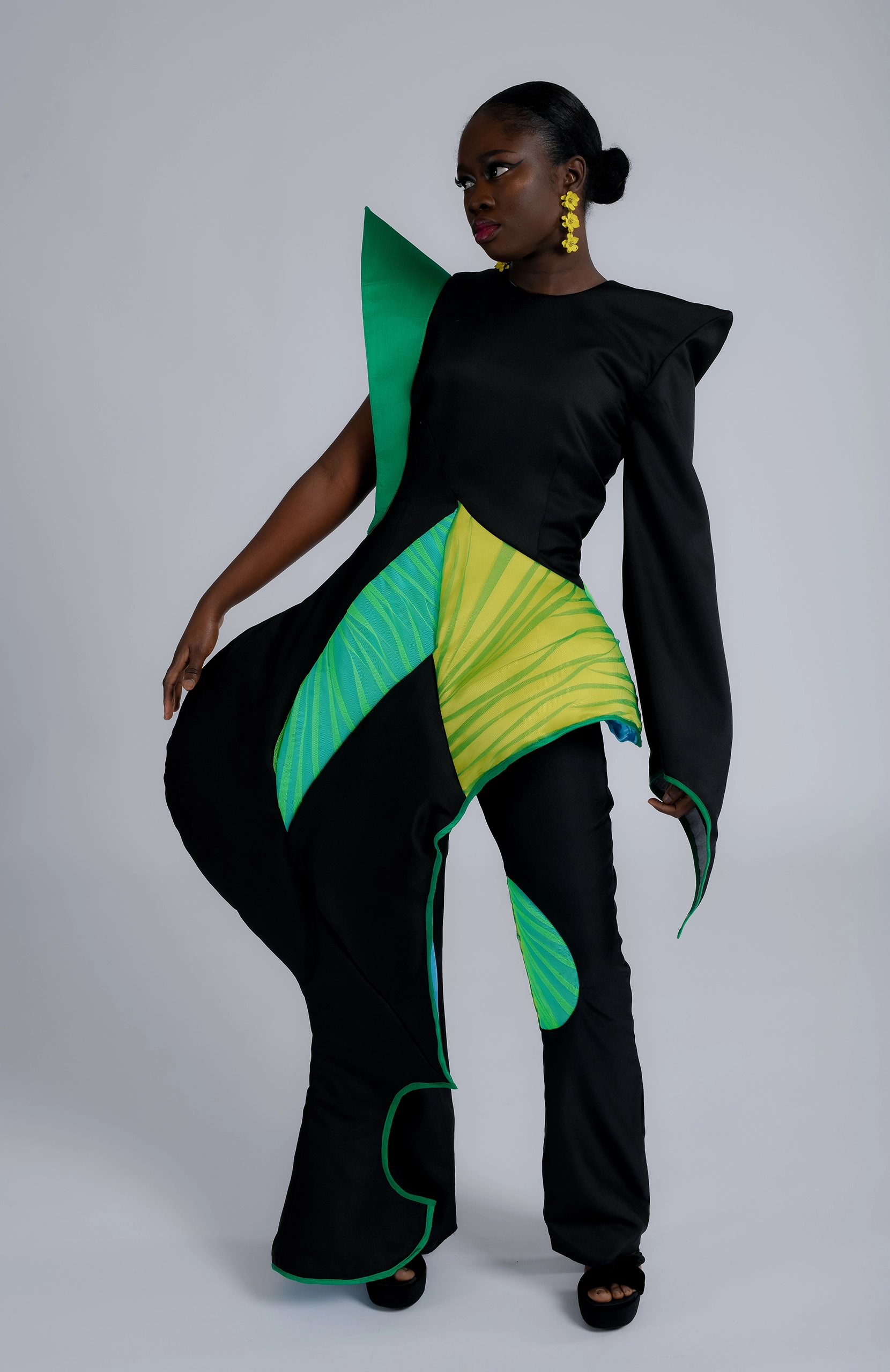
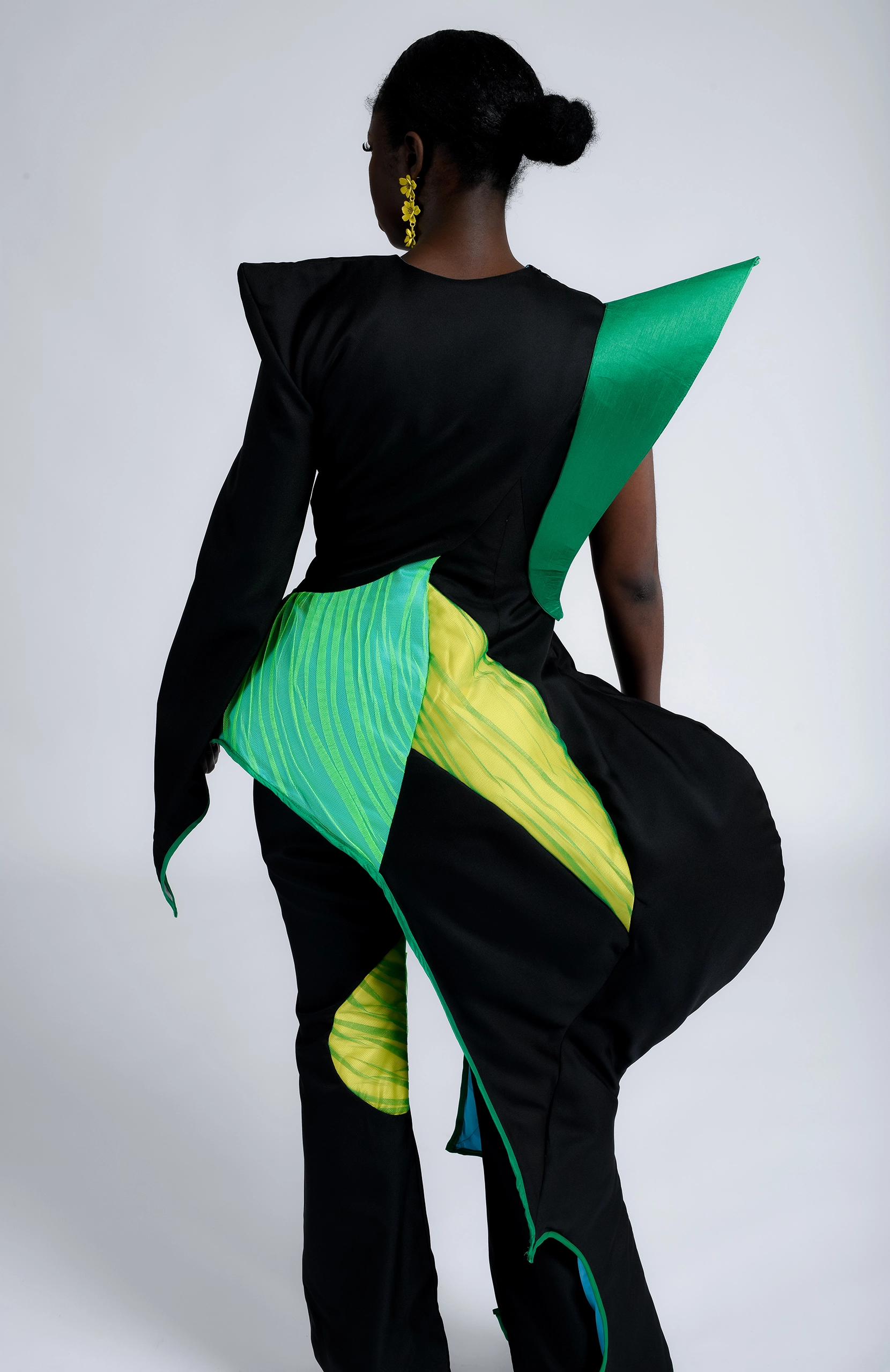
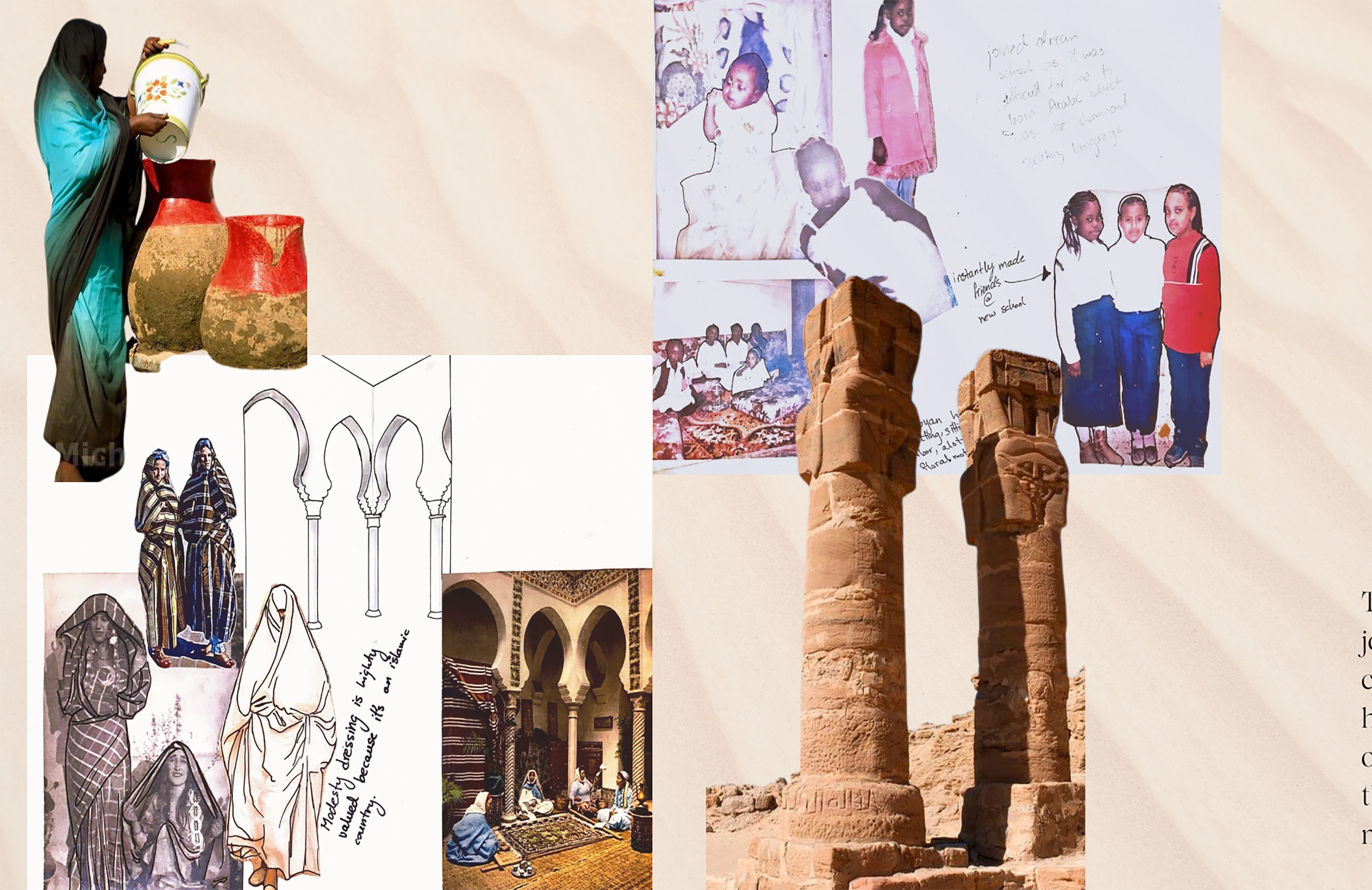
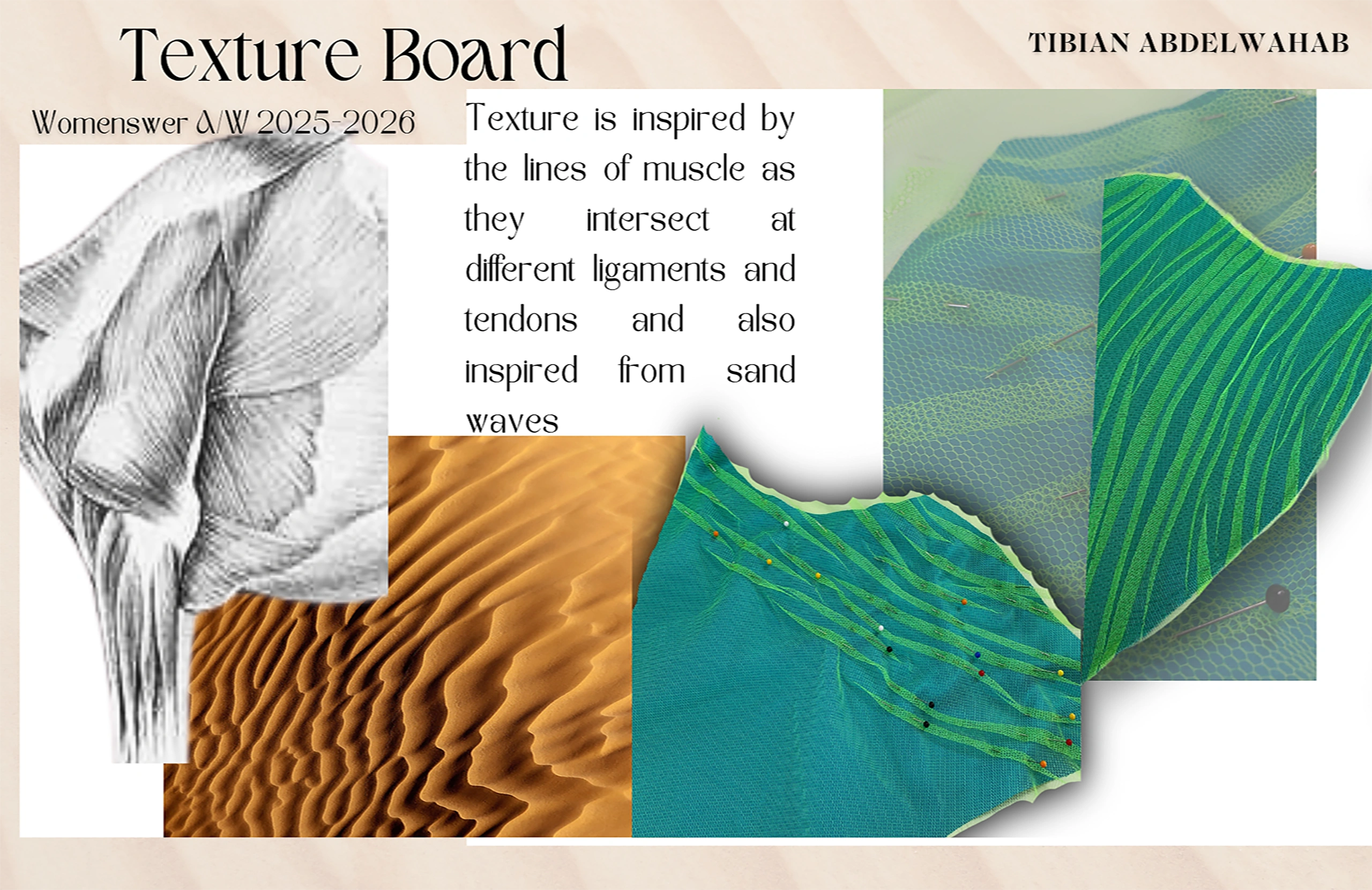
This collection is inspired by my personal journey travelling from Sudan to Libya by road—a passage marked by vast landscapes, shifting identities, and the quiet resilience of navigating unfamiliar worlds. Each piece in the collection reflects a fragment of that transformative experience, where the textures of desert life blend with the emotional terrain of migration and adaptation.
The road between Sudan and Libya is more than a route; it is a corridor of contrast. I passed through arid lands, watched the endless dunes dissolve into horizons, and felt the weight of silence that only the desert can hold. These moments are echoed in the fabric choices: raw cotton, sandy-toned linens, and layered materials that mirror the rugged beauty of the journey.
Arriving in Libya meant stepping into a country that was not my own. There was a constant push and pull between preserving my identity and blending into a new culture. This duality is represented in the silhouettes—traditional Sudanese draping fused with Libyan tailoring, flowing garments interrupted by structured seams, symbolizing moments of both belonging and displacement.
Living in a different country reshaped the way I see the world and myself. It taught me about survival, cultural fusion, and the strength found in transition. This collection is a tribute to that resilience. It speaks to anyone who has ever crossed borders—geographical or emotional—in search of meaning, safety, or self.
“Journey” is not just clothing. It is memory, motion, and migration stitched into every thread.
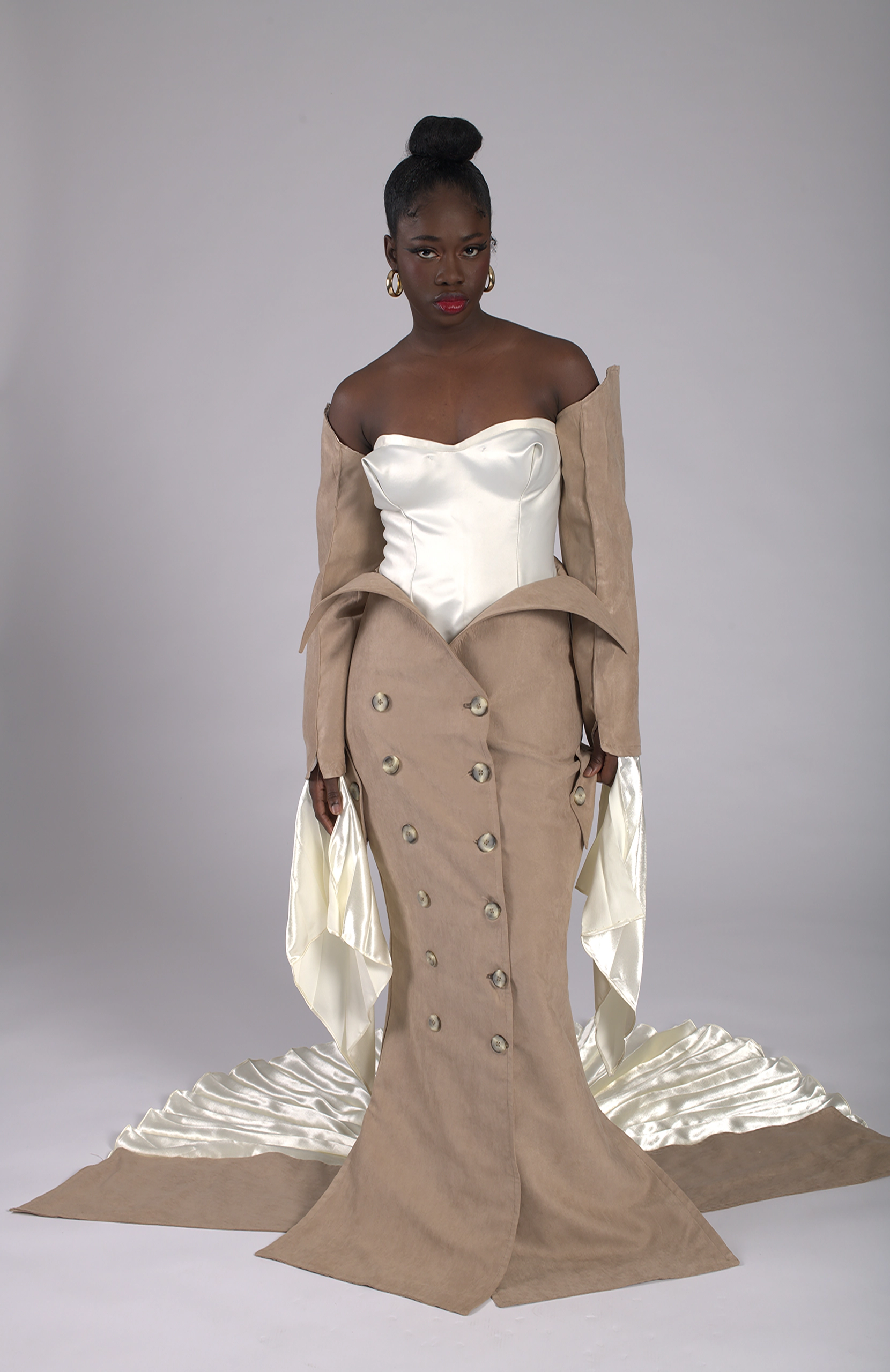
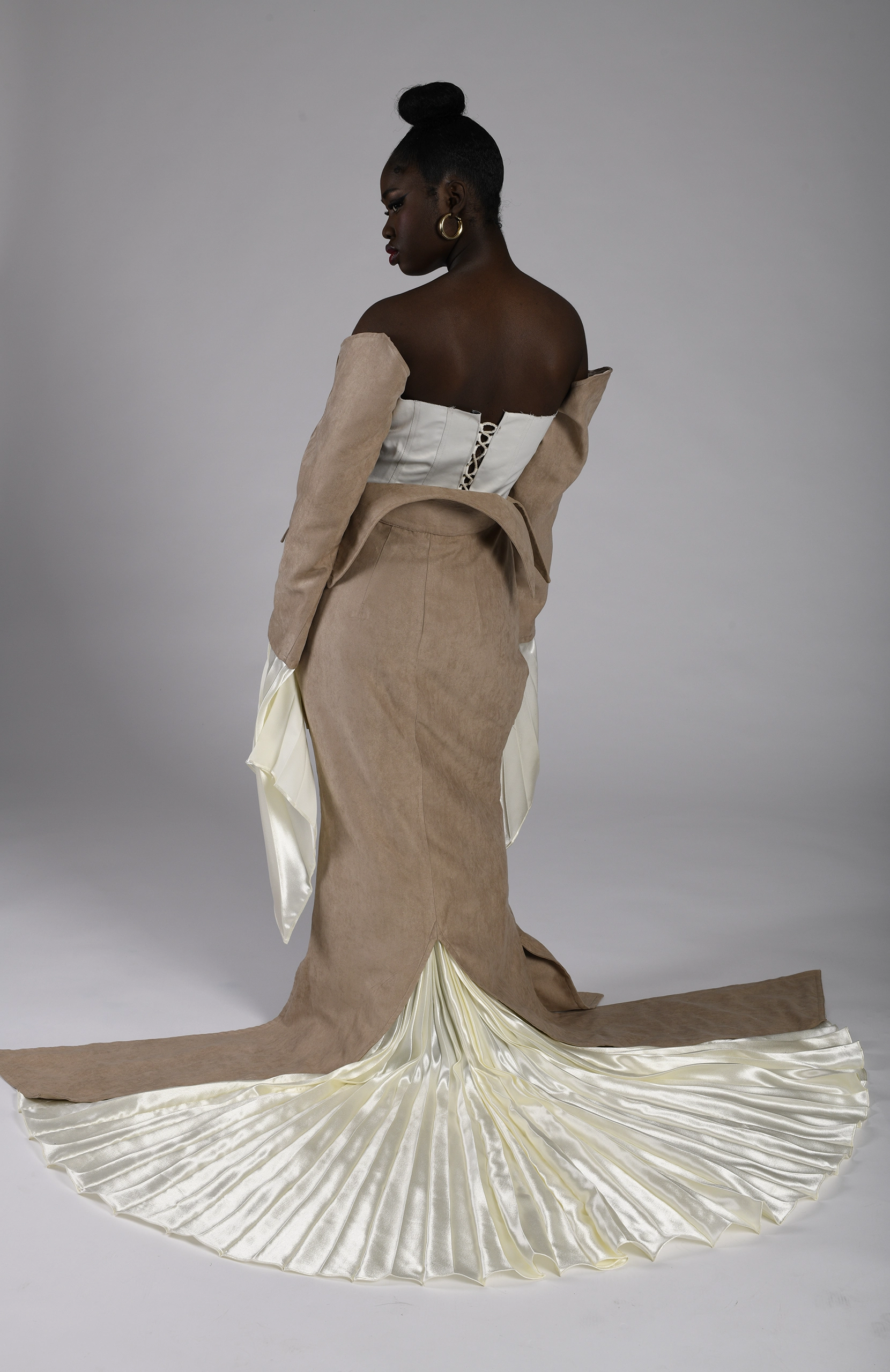
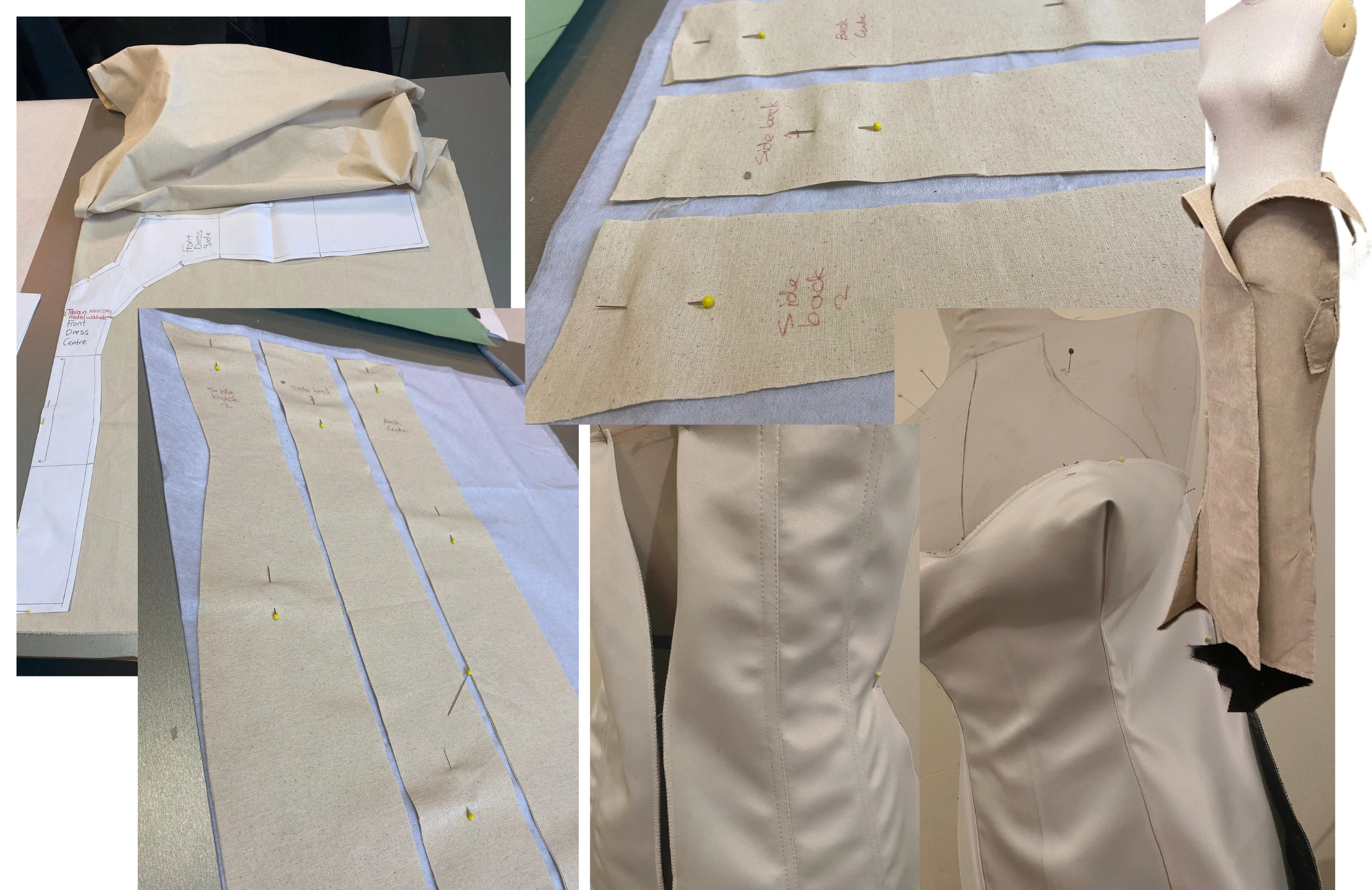
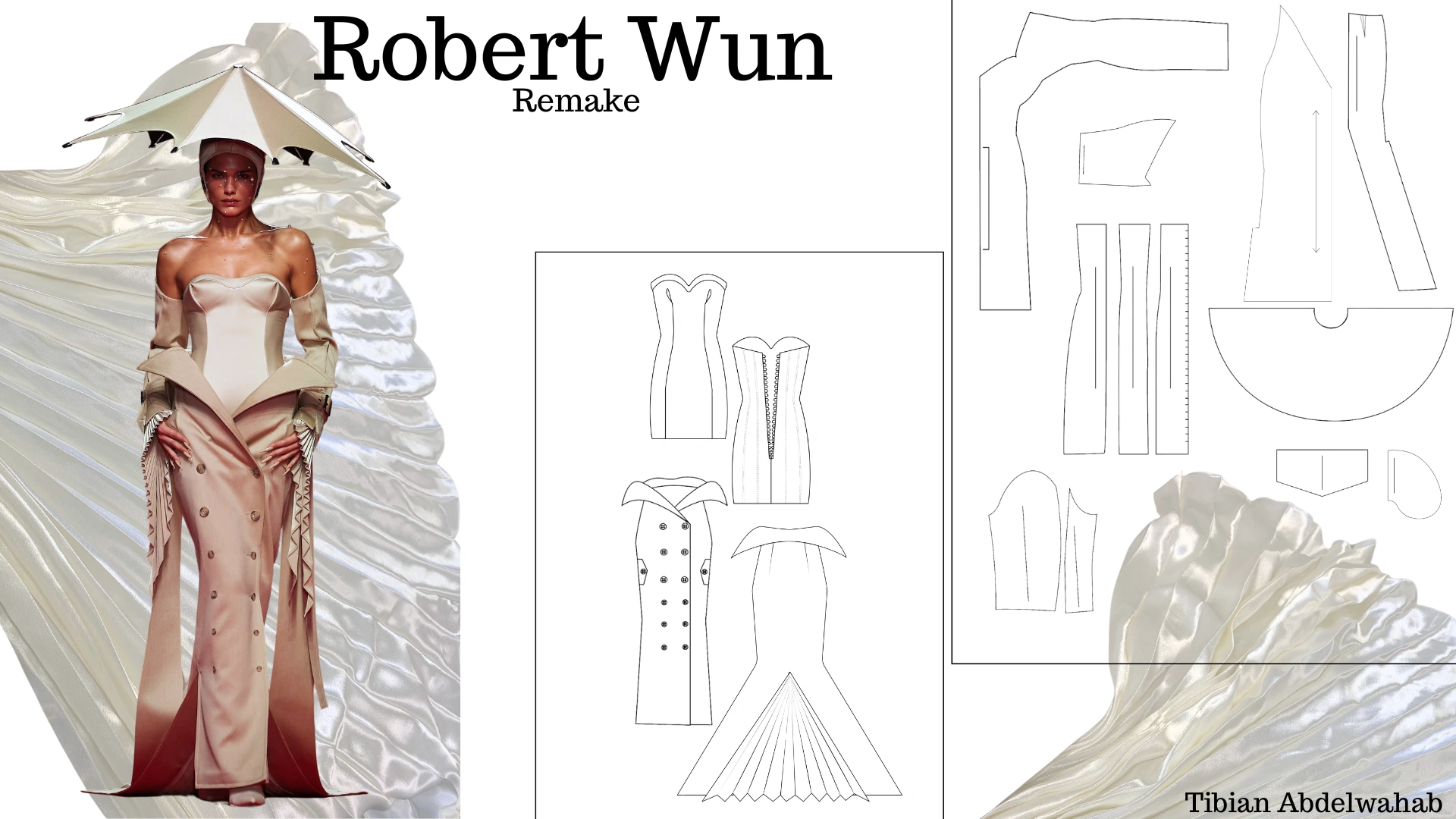
Robert Wun Remake
This design is a bold recreation of one of Robert Wun’s couture dresses signature aesthetic, transforming a tailored trench coat into an avant-garde skirt. The trench, reimagined from its utilitarian origins, features sharply extended lapels that drape over the hips like sculptural panels, creating architectural volume and movement. Traditional double-breasted buttons are retained, offering a nod to classic tailoring while grounding the design in familiar sartorial language. At the back, a dramatic train cascades to the floor in pleated crepe satin, evoking elegance with a sense of fluid motion, balancing the coat’s structure with softness and luxury.
Beneath this commanding silhouette lies a fitted inner bodice in the form of a mini dress. Designed with a cinched waist and corset-style lacing at the back, it accentuates the figure and adds a layer of sensuality to the ensemble. The interplay between the structured trench-skirt and the delicately detailed mini dress creates a duality of strength and femininity. This remake pays homage to Wun’s flair for combining theatricality with tailoring, offering a fresh take on contemporary couture that blurs the line between outerwear and formalwear. It is both a statement of power and an exploration of form, texture, and silhouette.
No students found for the selected year.